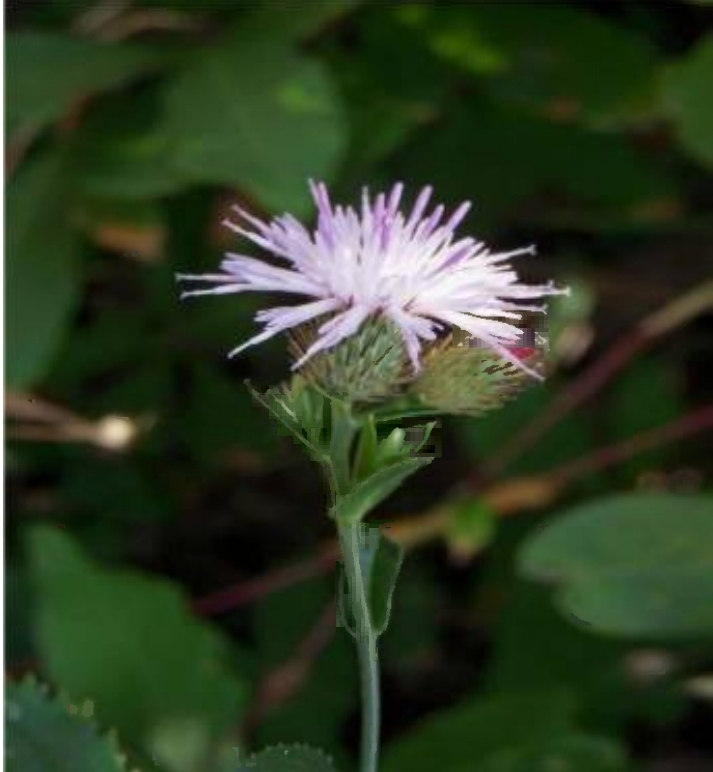Welcome to your holistic living

Botanical Name: Tricholepis glaberrima
Family: Asteraceae
English Name: Mexican poppy or Prickly Poppy
Malayalam Name: Brahmadandi
Hindi Name: Brahmadandi
Habit: An erect herb. Stem: Glabrous, slender, branched unarmed, branches angled and ribbed. Leaves: Leaves simple, alternate, exstipulate, sessile, 6 x 0.7 cm long, lanceolate, spinous, serrate margin, acute apex, punctuate, base of cauline leaves not or rarely auricled, midrib and nerves very prominent beneath, unicostate reticulate venation. Inflorescence: Capitulum solitary, terminal, 6 – 8 mm long, ovoid, glabrous, pedunculate, homogamous. Flower: Bracteate, involucre bracts linear – lanceolate, multi-seriate, imbricate aestivation, narrow, exterior gradually shorter, all aristate – acuminate, ciliolate, slightly recurved; actinomorphic, pentamerous, bisexual; unequal. Calyx : Paleae of the receptacle reaching much above the pappus, narrowly linear, acute, pappus shorter than the achenes, copious, yellowish-brown, sub-paleaceous, unequal. Corolla: Corolla tube slender, limb deePly 5-fid, 12 – 13 mm long, regular, gamopetalous, purple, valvate aestivation. Androecium: Stamens 5, epipetalous, syngenesious, filaments papillose, hairy, anther-lobes sagittate with connate auricles, tailsslender, lacerate, dithecous, basifixed, anthers cream coloured. Gynoecium: Bicarpellary, syncarpous, inferior ovary, unilocular with one ovule on basal placentation, style-arms slender, short with a ring of hairs at the base of the lobes, stigma flat, acute. Fruit: Achenes glabrous, oblong, smooth, not ribbed. Flowering period: November – January.
Stems, leaves
1)Aphrodisiac and Nervine Tonic: It is traditionally used for seminal debility and impotence. 2)Bone and Immune Health: Modern interpretation suggests its use for supporting bone strength and the immune system due to its mineral content and antioxidant properties. 3)Antioxidant Properties: Studies suggest it can boost antioxidant enzymes in the body, potentially benefiting various systems. 4)Skin Conditions: Folk medicine uses include treating conditions like leukoderma and eczema. 5)Other Uses : Traditional uses also include treating cough, acting as an antidote for snakebite, and addressing digestive issues like diarrhea. 6)The Plant is used in leucoderma and skin diseases.It is believed to be a nervine tonic and an aphrodisiac.
Hepatoprotective, antioxidant, anti-inflammatory, antidepressant, and antihyperglycemic (anti-diabetic) properties,
Rasa: Katu, Tikta, Kashaya
Guna: Laghu
Virya: Usna
Vipaka: Katu
Dosha Karma: Pittakapha shamaka